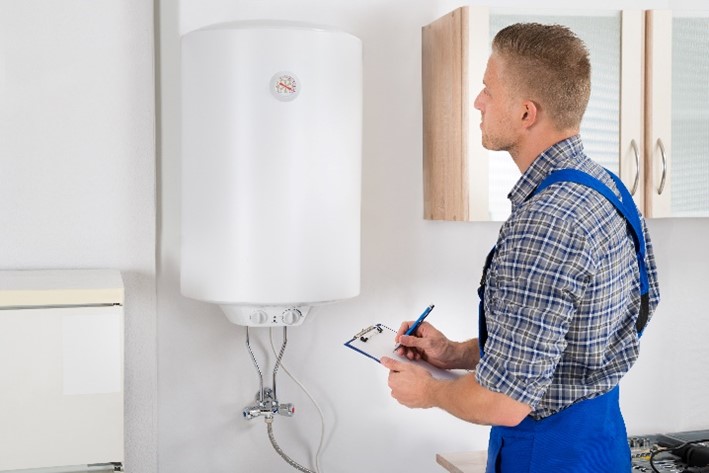Expert Advice for Maintaining Your Home's Hot Water SystemSteps to Successfully Care for Your Home's Hot Water SystemEasy Methods to Care for Your Home's Hot Water System Properly
Expert Advice for Maintaining Your Home's Hot Water SystemSteps to Successfully Care for Your Home's Hot Water SystemEasy Methods to Care for Your Home's Hot Water System Properly
Blog Article
Are you searching for help involving Tips on Maintaining a Water Heater?
:max_bytes(150000):strip_icc()/tankless-hot-water-system-in-the-basement-of-a-green-technology-home-529577258-77afda16fd494c6899a78000888c3204.jpg)
Warm water is crucial for everyday comfort, whether it's for a revitalizing shower or washing meals. To guarantee your warm water system runs efficiently and lasts much longer, normal upkeep is essential. This write-up offers sensible ideas and insights on just how to keep your home's warm water system to stay clear of disruptions and costly repair services.
Introduction
Keeping your home's hot water system may appear difficult, however with a few straightforward steps, you can ensure it operates efficiently for several years to come. This guide covers every little thing from comprehending your hot water system to DIY maintenance ideas and recognizing when to employ professional assistance.
Value of Maintaining Your Hot Water System
Regular upkeep not just expands the life-span of your warm water system yet likewise guarantees it runs efficiently. Overlooking upkeep can lead to reduced efficiency, higher power bills, and also early failure of the system.
Indications Your Warm Water System Demands Maintenance
Understanding when your hot water system requires focus can prevent significant problems. Look out for signs such as irregular water temperature, unusual noises from the heating system, or corroded water.
Purging the Hot Water Heater
Flushing your water heater gets rid of sediment buildup, improving performance and prolonging its life.
Checking and Changing Anode Rods
Anode rods prevent rust inside the storage tank. Checking and replacing them when worn is critical.
Complex Issues Calling For Expert Aid
Instances include significant leaks, electric troubles, or if your water heater is regularly underperforming.
Routine Specialist Maintenance Perks
Professional maintenance can consist of comprehensive examinations, tune-ups, and ensuring compliance with security criteria.
Examining and Adjusting Temperature Settings
Adjusting the temperature settings guarantees optimum efficiency and security.
DIY Tips for Maintenance
You can carry out several maintenance tasks on your own to maintain your warm water system in top condition.
Checking for Leakages
Regularly evaluate pipes and links for leakages, as these can result in water damages and higher expenses.
Understanding Your Warm Water System
Before diving into upkeep tasks, it's practical to comprehend the basic parts of your hot water system. Typically, this includes the hot water heater itself, pipes, anode rods, and temperature level controls.
Month-to-month Maintenance Tasks
Routine monthly checks can help catch small issues prior to they intensify.
Examining Pressure Relief Valves
Checking the pressure relief valve ensures it functions properly and avoids extreme stress accumulation.
Shielding Pipelines
Insulating warm water pipelines reduces warm loss and can save power.
When to Call a Professional
While do it yourself maintenance is valuable, some issues need specialist competence.
Verdict
Regular maintenance of your home's warm water system is crucial for efficiency, longevity, and expense financial savings. By following these suggestions and understanding when to look for professional help, you can guarantee a trusted supply of hot water without unexpected interruptions.
How to Maintain an Instant Hot Water Heater
Before tinkering with your hot water heater, make sure that it’s not powered on. You also have to turn off the main circuit breaker and shut off the main gas line to prevent accidents. Also turn off the water valves connected to your unit to prevent water from flowing into and out of the appliance. 2. When you’re done, you have to detach the purge valves’ caps. These look like the letter “T” and are situated on either side of the water valves. Doing so will release any pressure that has accumulated inside the valves while at the same time avoid hot water from shooting out and burning your skin. 3. When the purge valves’ caps are removed, you have to connect your hosing lines to the valves. Your unit should have come with three hoses but if it didn’t, you can purchase these things from any hardware or home repair shops. You can also get them from retail stores that sell water heating systems. Read the user’s manual and follow it to complete this task properly. When the hosing lines are connected, open the purge port’s valves. 4. You should never use harsh chemical cleaners or solutions when cleaning your unit. Make use of white vinegar instead. It should be undiluted and you’ll probably use about 2 gallons. 5. Now flush your water heater. This task should probably take about 40 minutes. We can’t give you specific directions for this because the procedure is carried out depending on the type, model and brand of your heater. With that being said, refer to the user’s manual. 6. When you’re done draining the unit, you have to turn off the purge port valves again. Remove the hosing lines that you earlier installed on each of the water valves. Put the valve caps (purge port) back in their respective places and be very careful so as not to damage the rubber discs that are found inside these caps. 7. Now that everything’s back in place, check your user’s manual again to find out how to reactivate your water heating system. 8. Once it is working, turn one of your hot water faucets on just to let air pass through the heater’s water supply pipes. Leave the tap on until water flows smoothly out of it. https://www.orrplumbing.com/blog/2014/september/how-to-maintain-an-instant-hot-water-heater/

I came across that piece on Tips on Maintaining a Water Heater while exploring the internet. Do you know somebody who is in the market for the niche? Take a moment to promote it. We love your readership.
Call Today Report this page